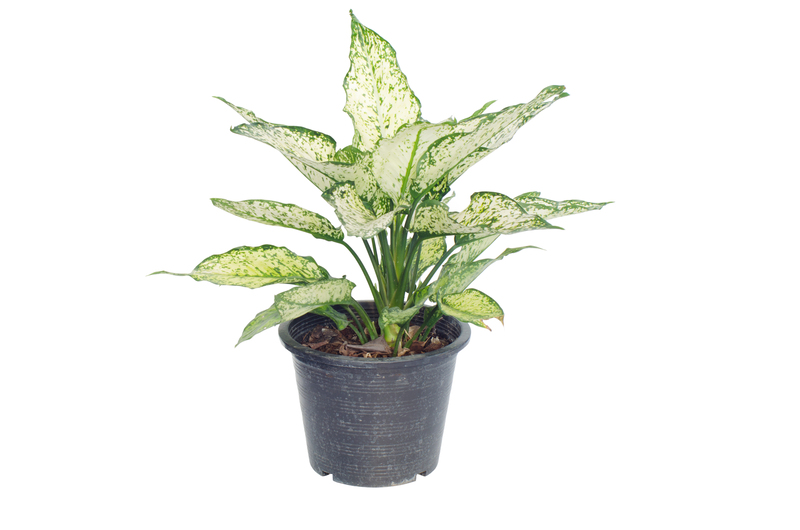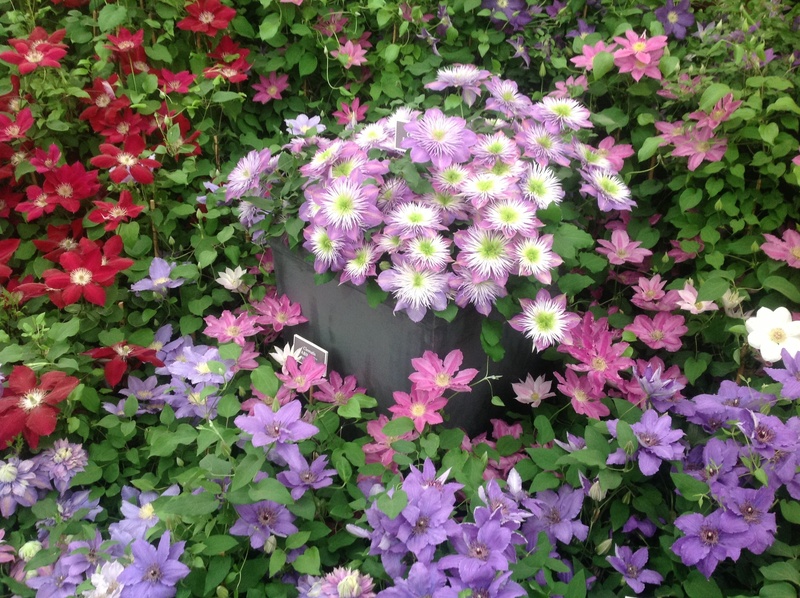Garden Preservation Tactics: Winter Plant Defense
Posted on 14/08/2025
Garden Preservation Tactics: Winter Plant Defense
As the days grow shorter and temperatures drop, gardeners face one of their greatest annual battles: defending cherished plants during the cold winter months. Winter plant defense goes beyond simply surviving frosts--it's about nurturing your green spaces so they burst back to life come spring. This comprehensive guide to garden preservation tactics is specifically designed to help you understand winter threats, strategize protection, and ensure your garden thrives year after year.

Understanding Winter Threats to Plants
To properly implement winter plant preservation methods, it's crucial to first recognize the environmental stresses winter imposes:
- Frost Heave: Repeated freezing and thawing causes soil to expand and contract, lifting and damaging roots.
- Desiccation: Cold, dry winds and frozen ground prevent roots from absorbing water, leading to dehydration.
- Snow and Ice Damage: Heavy accumulations can snap branches and flatten delicate growth.
- Animal Foraging: Scarcer food sources drive rodents and deer to nibble bark and stems.
- Rapid Temperature Fluctuations: Warm spells followed by sudden cold snaps can shock and damage plant tissues.
Garden preservation during winter requires a holistic approach, focusing on soil, structural support, hydration, and pest deterrence. Below, we break down the most effective winter plant defense strategies every gardener should know.
Garden Preparation: The Foundation of Winter Resilience
1. Choosing the Right Plants
One of the best tactics for garden preservation in winter is planning ahead with climate-appropriate species. Native perennials and hardy trees are naturally suited to local cold cycles and less prone to winter kill. Consider researching USDA hardiness zones to guide your plant decisions, ensuring long-term garden sustainability.
2. Proper Timing for Planting and Maintenance
Late fall is the pivotal period for garden preservation tactics. Here's what to do:
- Cease Fertilization: Stop feeding plants by midsummer to encourage healthy dormancy instead of soft, frost-vulnerable new growth.
- Complete Pruning: Prune diseased or dead branches to reduce snow load risks, but avoid heavy trims which can stimulate late growth.
- Amend Soil: Add organic matter like compost to improve drainage and root insulation before the first freeze.
Mulching: The Garden's Winter Blanket
Applying mulch is a cornerstone of winter plant protection. A thick mulch layer insulates roots, stabilizes soil temperature, and helps maintain moisture levels.
Mulching Techniques for Maximum Garden Preservation
- Material Selection: Use organic mulches like shredded leaves, straw, pine needles, or wood chips, which break down to nourish the soil.
- Depth of Mulch: Apply 2-4 inches for perennials and up to 6 inches for roses or shallow-rooted plants. Avoid piling mulch against trunks, which invites rot.
- When to Mulch: Wait until the ground has frozen to prevent rodents from nesting and to avoid trapping in too much heat.
Physical Barriers: Shields Against Winter Hazards
Physical structures and coverings can dramatically increase the success rate of winter plant survival.
Popular Garden Defense Methods
- Burlap Wraps: Shield shrubs and sensitive evergreens from windburn and harsh sun by wrapping them in breathable burlap.
- Fleece or Frost Cloths: Cover low-growing annuals and vegetables to trap warmth and block frost.
- Windbreaks: Install temporary fences or screens on the garden's windward side to minimize cold winds.
- Tree Guards: Use plastic spiral tree protectors to prevent damage from gnawing rodents and sunscald on young trunks.
- Cloche Domes and Cold Frames: Place clear covers over tender plants or seedlings to create microclimates and extend harvests.
Watering Wisely: Hydration Even During Dormancy
One often overlooked aspect of winter garden preservation is strategic watering. Even in dormancy, many plants need ample moisture to avoid winter desiccation.
Proper Watering Timing and Techniques
- Deep Soak Before Freeze: Give beds and trees a thorough watering ahead of hard frosts, ensuring roots are equipped for long periods without rain.
- Avoid Waterlogging: Good drainage is crucial. Mulch helps, but raised beds and organic soil amendments further prevent root rot.
- Monitor Container Plants: Pots dry out faster--insulate or move them to protected spots and check moisture levels periodically on thawed days.
Protecting Vulnerable Plant Types
Different plants require unique approaches for optimal winter plant defense:
Tender Perennials and Bulbs
- Dig and Store: Non-hardy bulbs (dahlias, cannas, gladiolus) should be lifted, dried, and kept in a cool, dry area until spring.
- Mulch Generously: Hardy bulbs benefit from several inches of straw or shredded leaves to keep soil from repeated thawing.
Roses
- Hill Soil: Mound earth or compost around the crown base, then cover with straw or leaves for insulation.
- Use Rose Cones: For especially delicate varieties, place ventilated rose cones or cages filled with leaves over the entire plant.
Evergreens and Conifers
- Anti-Desiccant Sprays: Apply in late fall to help needles retain moisture and minimize winter burn.
- Water Thoroughly: Keep evergreens hydrated until the ground freezes solid.
Wildlife Management for Garden Preservation
Animals seeking winter food can quickly undo your best winter garden defense.
Humane Deterrents for Winter Wildlife
- Physical Barriers: Install wire mesh around tree bases and prized shrubs.
- Repellents: Use natural scent deterrents like garlic sprays or blood meal to keep deer and rabbits at bay.
- Reduce Attractants: Clean up fallen fruit or nuts and avoid winter bird seed close to vulnerable ornamental beds.
Special Winter Tasks for Fruit and Vegetable Gardens
Orchard Preservation
- Prune Cautiously: Remove broken branches, but wait for late winter to shape fruit trees; this avoids stimulating premature growth.
- Paint Trunks: White latex paint reflects sun and prevents bark splitting from fluctuating winter temperatures.
Winterizing the Vegetable Patch
- Cover Crops: Plant winter rye or clover to fix nutrients, prevent erosion, and suppress weeds.
- Row Covers: Use fabric tunnels to extend harvests of leafy greens and root crops deep into the cold season.
Winter Plant Defense for Container Gardens
Container gardens are particularly vulnerable during winter as their roots aren't insulated by surrounding soil. Here's how to keep them safe:
- Move Indoors: Transfer non-hardy pots to an unheated garage or sheltered porch.
- Wrap Pots: Insulate with bubble wrap or burlap. Grouping containers together also helps reduce heat loss.
- Elevate and Drain: Set pots on feet or bricks to prevent freezing from trapped water underneath.
Maintaining Vigilance: Monitoring and Adjustment
No winter plant protection strategy is set-it-and-forget-it. Throughout the cold months, walk your garden after storms, check for broken branches, collapsed covers, or exposed roots, and adjust as needed. Consistent vigilance is a hallmark of successful gardening preservation in winter.

Spring Readiness: Easing Plants Out of Dormancy
As warmer weather returns, remove heavy mulches gradually and unwrap covers to prevent overheating and rot. Rehydrate beds and monitor for signs of frost injury, pruning away damaged growth to set the stage for robust spring recovery. Record what worked and what didn't in your winter plant defense for even better results next year.
Conclusion: The Art of Garden Preservation Through Winter
Effective winter plant defense is an ongoing process that starts in fall and continues through spring thaw. With careful planning, resilient plant choices, protective structures, and timely maintenance, you can safeguard the results of your hard work and enjoy a lush, vibrant garden season after season.
- Plan for Your Climate: Choose plants adapted to local winters.
- Mulch Generously: Insulate roots and suppress winter weeds.
- Use Barriers and Covers: Defend against wind, frost, and hungry wildlife.
- Water Wisely: Prevent dehydration during frozen months.
- Monitor Continuously: Adjust tactics as weather and garden needs shift.
With these comprehensive garden preservation tactics for winter, your plants will stand strong through the cold and awaken with new vigor once spring arrives!

